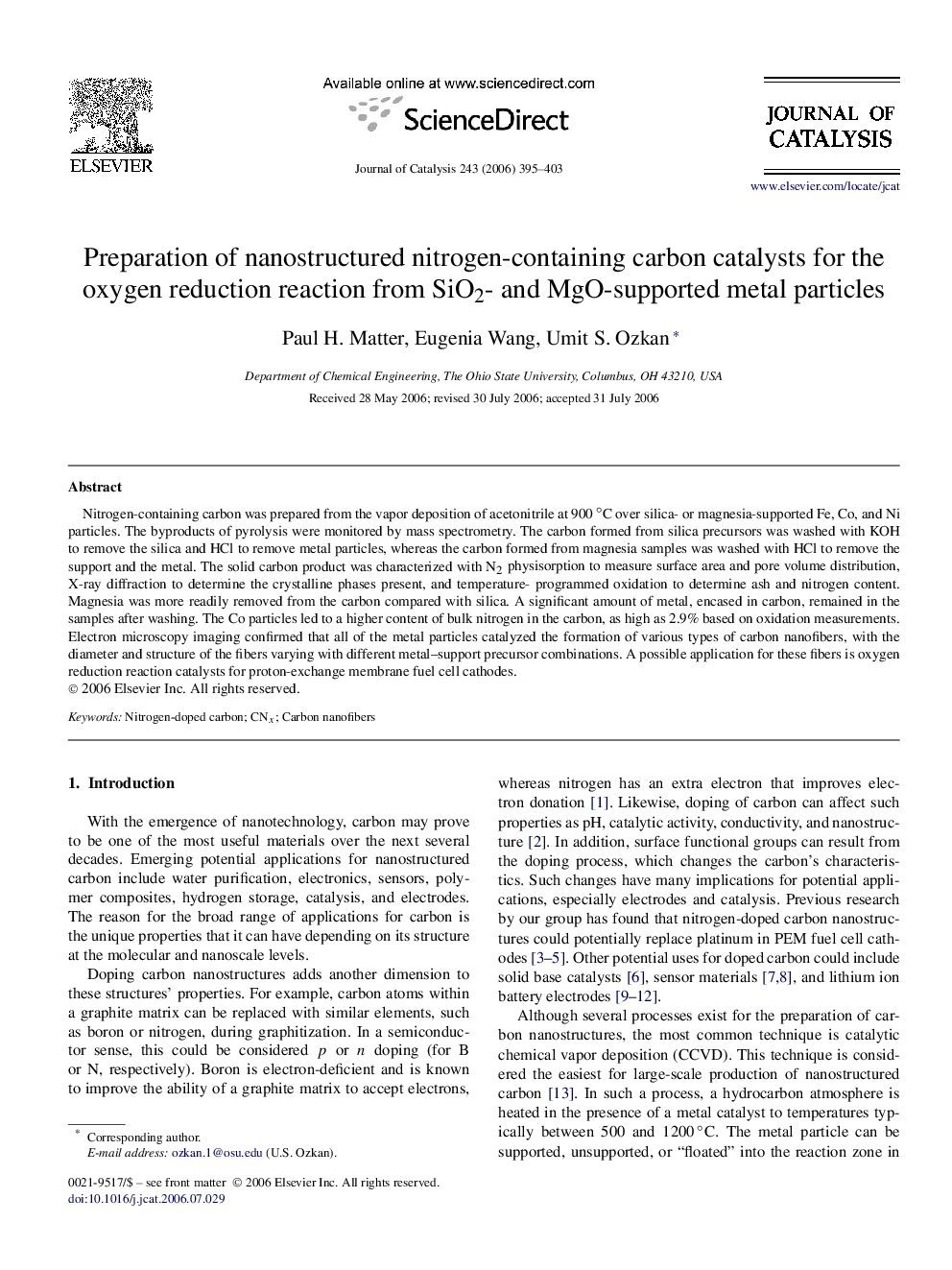| Article ID | Journal | Published Year | Pages | File Type |
|---|---|---|---|---|
| 63401 | Journal of Catalysis | 2006 | 9 Pages |
Nitrogen-containing carbon was prepared from the vapor deposition of acetonitrile at 900 °C over silica- or magnesia-supported Fe, Co, and Ni particles. The byproducts of pyrolysis were monitored by mass spectrometry. The carbon formed from silica precursors was washed with KOH to remove the silica and HCl to remove metal particles, whereas the carbon formed from magnesia samples was washed with HCl to remove the support and the metal. The solid carbon product was characterized with N2 physisorption to measure surface area and pore volume distribution, X-ray diffraction to determine the crystalline phases present, and temperature-programmed oxidation to determine ash and nitrogen content. Magnesia was more readily removed from the carbon compared with silica. A significant amount of metal, encased in carbon, remained in the samples after washing. The Co particles led to a higher content of bulk nitrogen in the carbon, as high as 2.9% based on oxidation measurements. Electron microscopy imaging confirmed that all of the metal particles catalyzed the formation of various types of carbon nanofibers, with the diameter and structure of the fibers varying with different metal–support precursor combinations. A possible application for these fibers is oxygen reduction reaction catalysts for proton-exchange membrane fuel cell cathodes.
